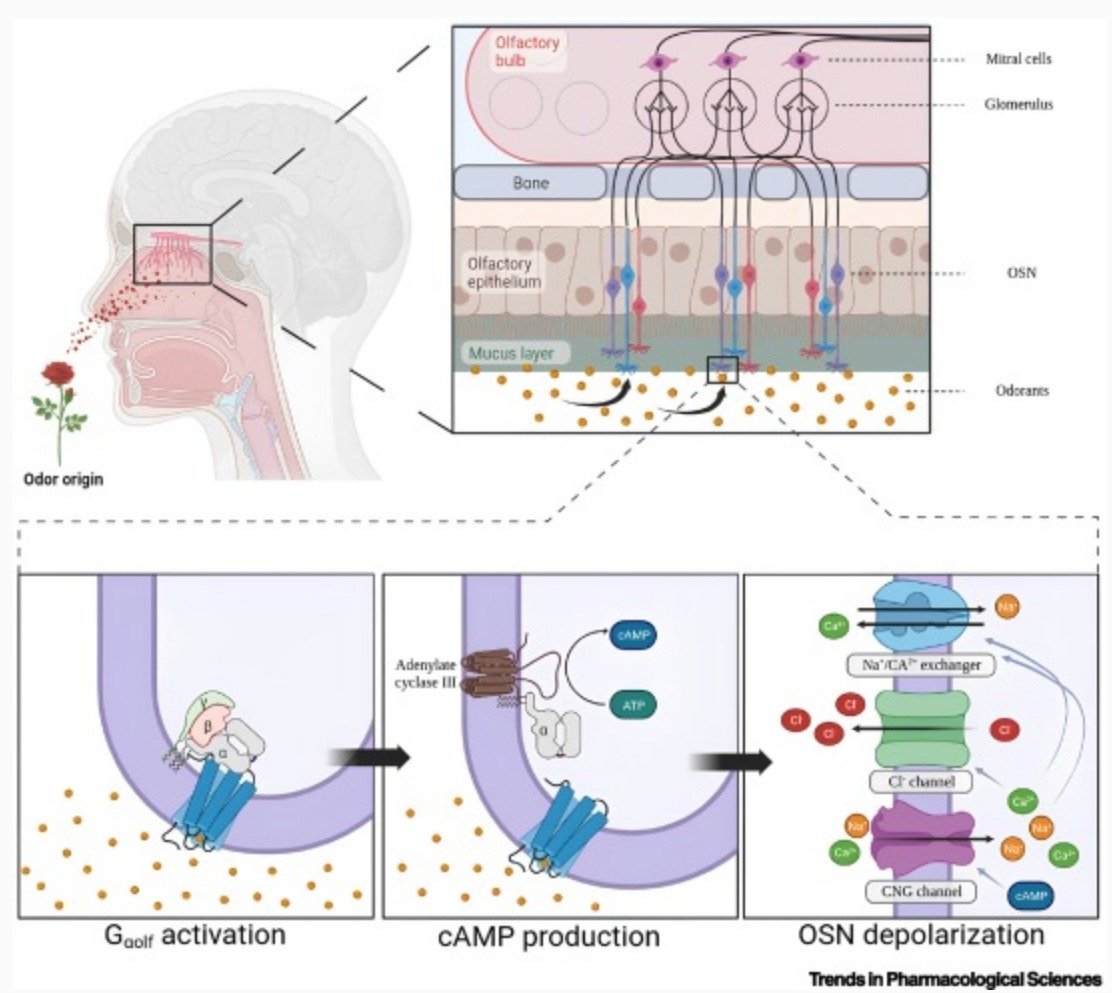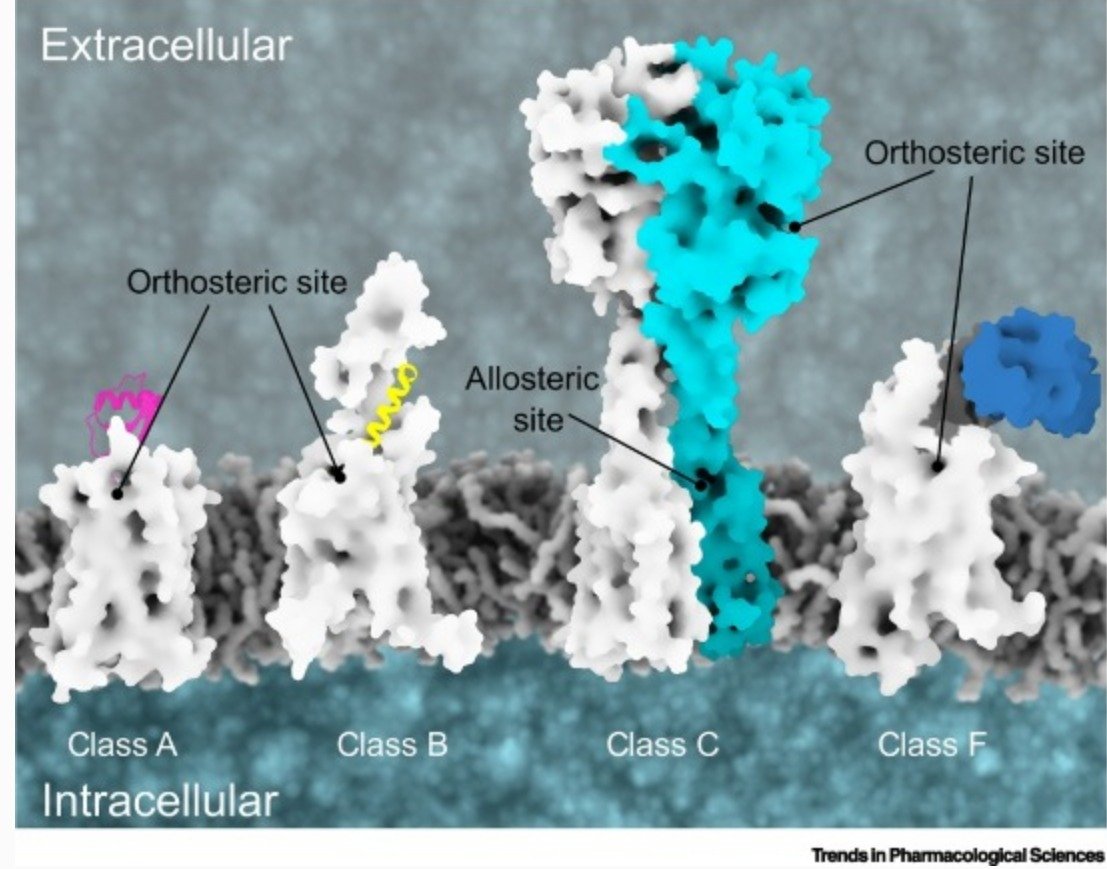Only the nose knows.
👃Olfactory receptors (ORs) form the most important chemosensory receptor family responsible through the nose for our sense of smell within the nasal olfactory epithelium.
👃This receptor family belongs to the class A G protein-coupled receptors (GPCRs). Recent research has indicated that ORs are involved in many nonolfactory physiological processes outside nasal tissue, such as the brain, pancreas, and testes, and implies the possible role of their dysregulation in various diseases.
👃Various OR51E2 and consensus OR52 structures have also unveiled the uniqueness of ORs from other class A GPCR members.
👃The odorant system is an encoding–decoding mechanism to detect and discriminate diverse volatile odorants as well as sense pathogen infection and is arguably alongside taste the most important receptor type in the human body through sensing pathogens and reacting through the immune system reportoire.

There are four different types of human GPCRs including classes A, B, C, and F, classified according to their unique structural features and properties of olfactory receptors. These ORs comprise almost 50% of the whole GPCR family,
